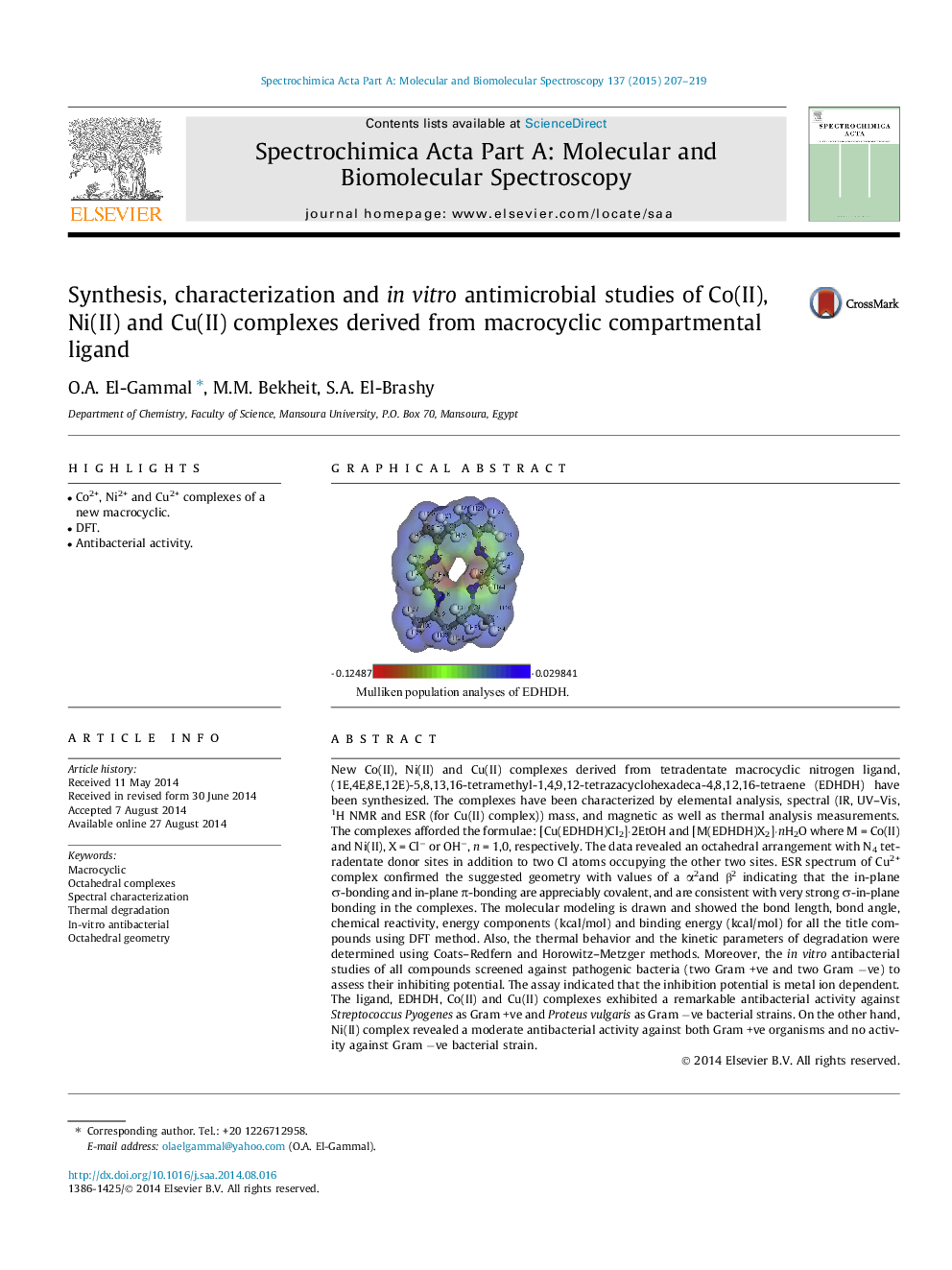| کد مقاله | کد نشریه | سال انتشار | مقاله انگلیسی | نسخه تمام متن |
|---|---|---|---|---|
| 1229233 | 1495232 | 2015 | 13 صفحه PDF | دانلود رایگان |

• Co2+, Ni2+ and Cu2+ complexes of a new macrocyclic.
• DFT.
• Antibacterial activity.
New Co(II), Ni(II) and Cu(II) complexes derived from tetradentate macrocyclic nitrogen ligand, (1E,4E,8E,12E)-5,8,13,16-tetramethyl-1,4,9,12-tetrazacyclohexadeca-4,8,12,16-tetraene (EDHDH) have been synthesized. The complexes have been characterized by elemental analysis, spectral (IR, UV–Vis, 1H NMR and ESR (for Cu(II) complex)) mass, and magnetic as well as thermal analysis measurements. The complexes afforded the formulae: [Cu(EDHDH)Cl2]·2EtOH and [M(EDHDH)X2]·nH2O where M = Co(II) and Ni(II), X = Cl− or OH−, n = 1,0, respectively. The data revealed an octahedral arrangement with N4 tetradentate donor sites in addition to two Cl atoms occupying the other two sites. ESR spectrum of Cu2+ complex confirmed the suggested geometry with values of a α2and β2 indicating that the in-plane σ-bonding and in-plane π-bonding are appreciably covalent, and are consistent with very strong σ-in-plane bonding in the complexes. The molecular modeling is drawn and showed the bond length, bond angle, chemical reactivity, energy components (kcal/mol) and binding energy (kcal/mol) for all the title compounds using DFT method. Also, the thermal behavior and the kinetic parameters of degradation were determined using Coats–Redfern and Horowitz–Metzger methods. Moreover, the in vitro antibacterial studies of all compounds screened against pathogenic bacteria (two Gram +ve and two Gram −ve) to assess their inhibiting potential. The assay indicated that the inhibition potential is metal ion dependent. The ligand, EDHDH, Co(II) and Cu(II) complexes exhibited a remarkable antibacterial activity against Streptococcus Pyogenes as Gram +ve and Proteus vulgaris as Gram −ve bacterial strains. On the other hand, Ni(II) complex revealed a moderate antibacterial activity against both Gram +ve organisms and no activity against Gram −ve bacterial strain.
Mulliken population analyses of EDHDH.Figure optionsDownload as PowerPoint slide
Journal: Spectrochimica Acta Part A: Molecular and Biomolecular Spectroscopy - Volume 137, 25 February 2015, Pages 207–219